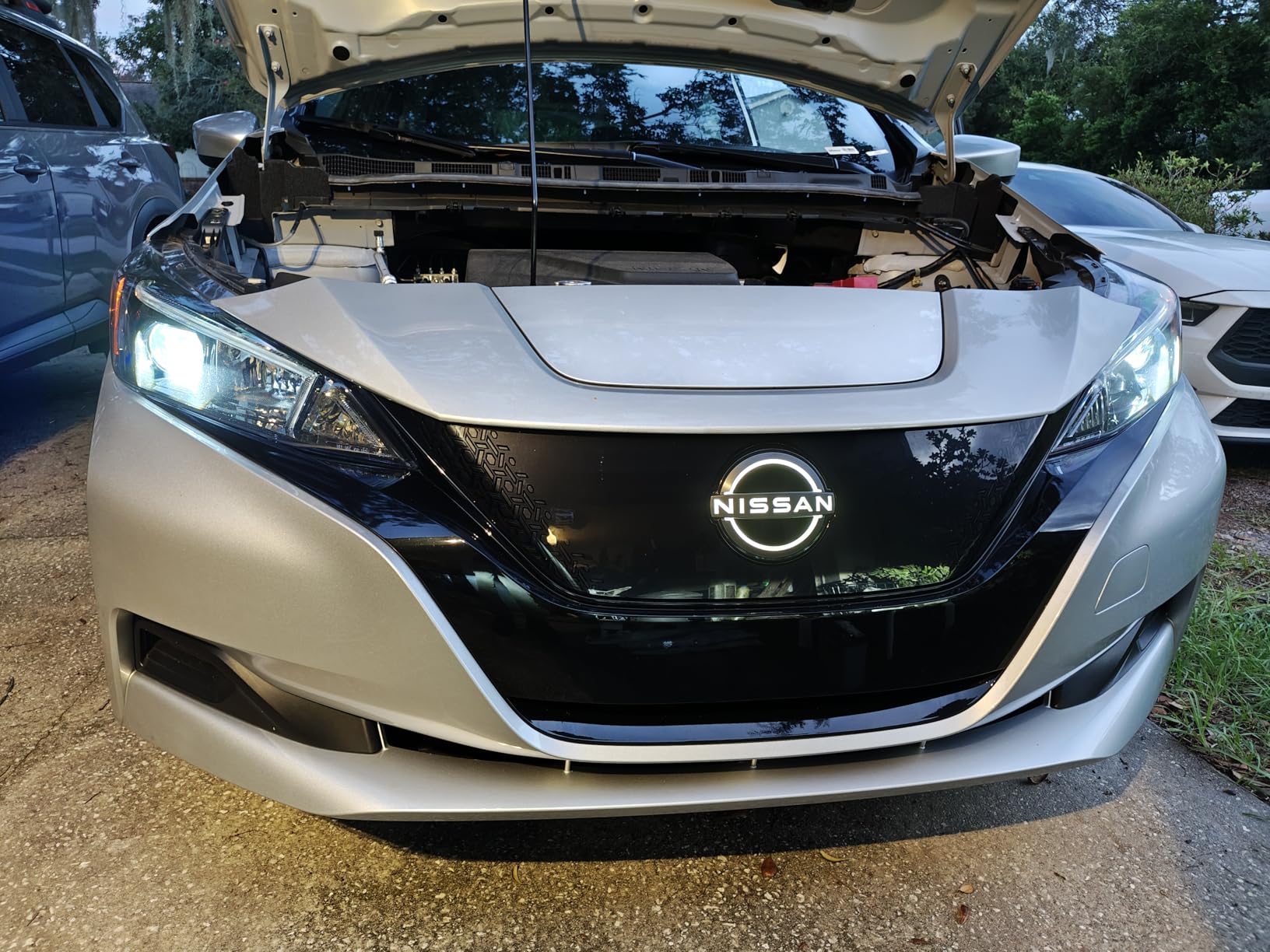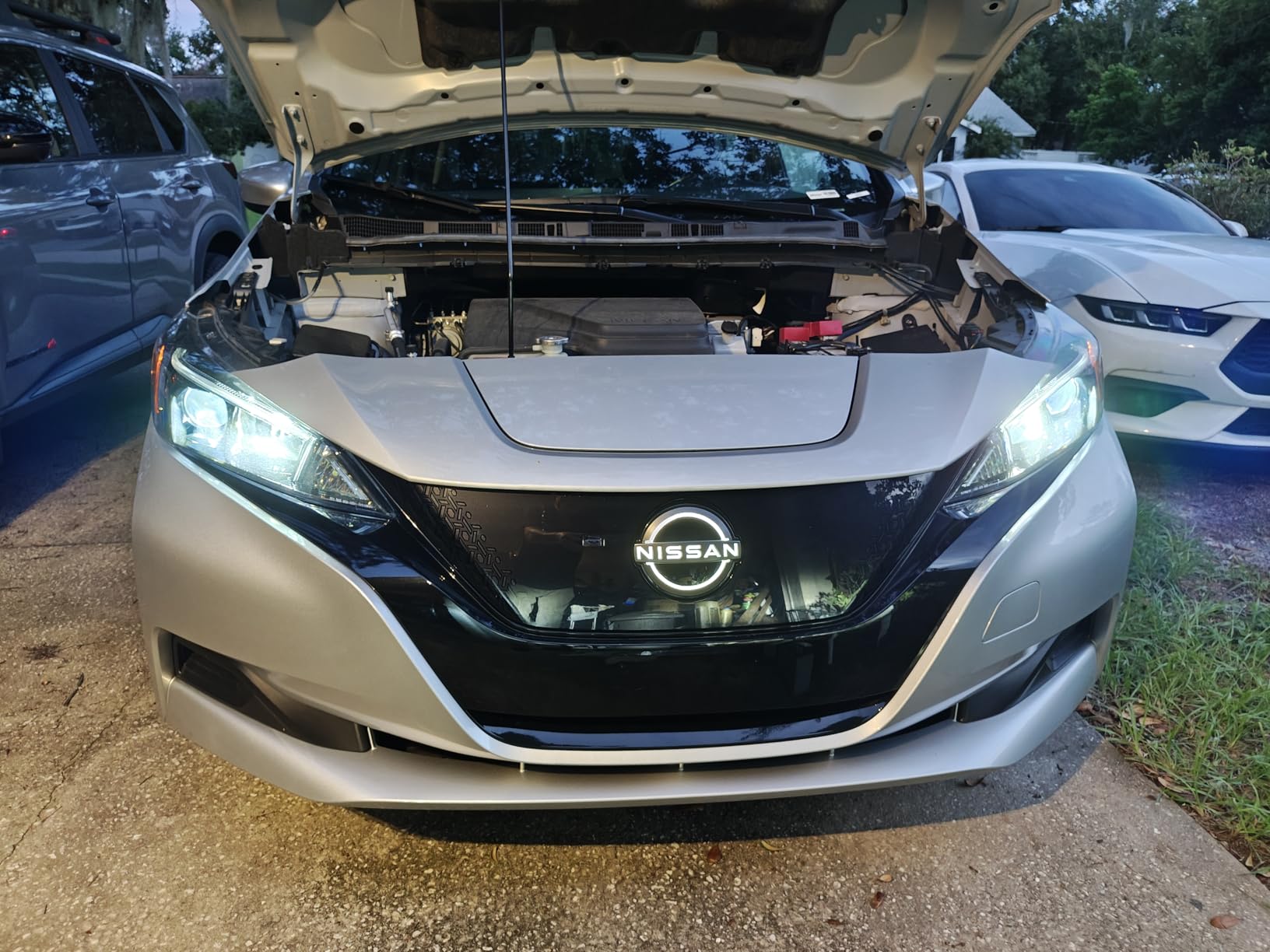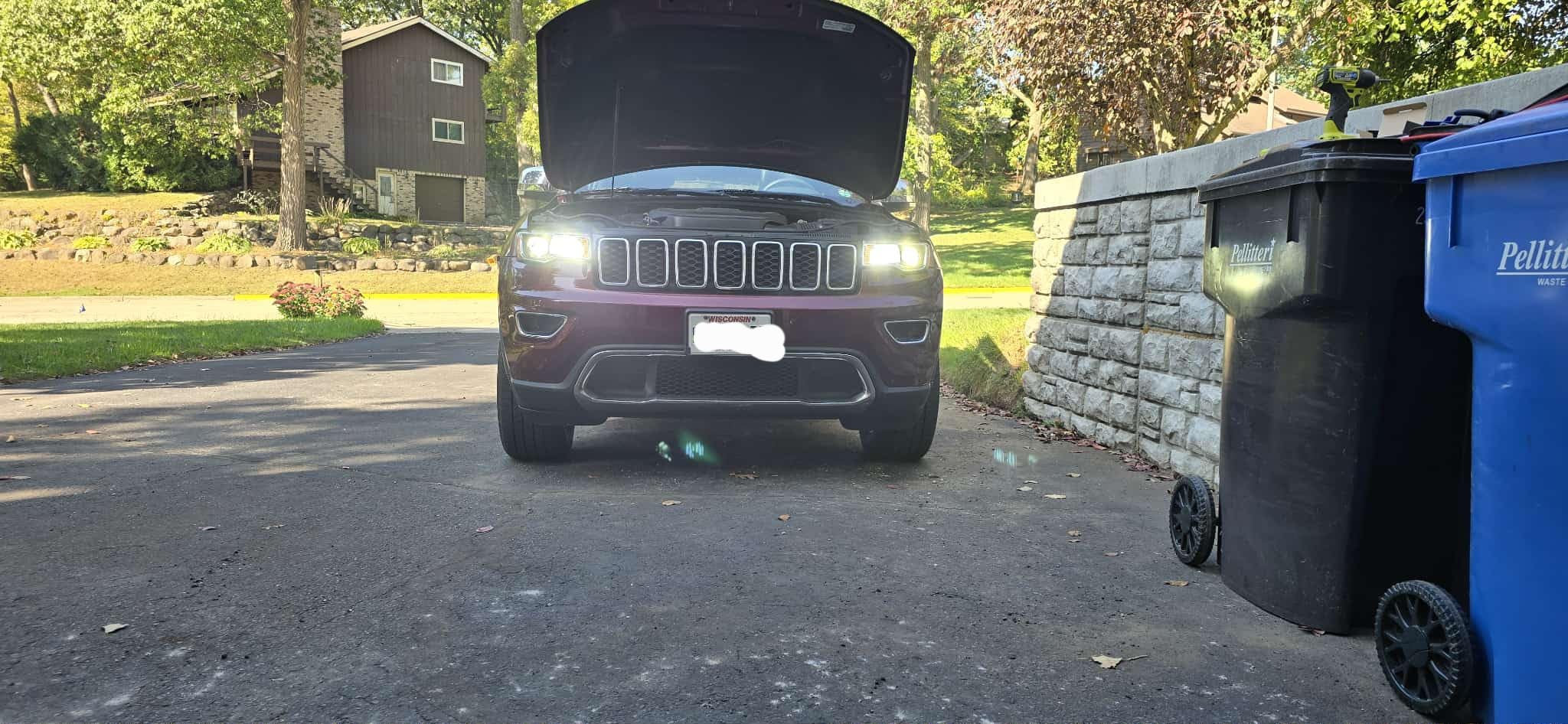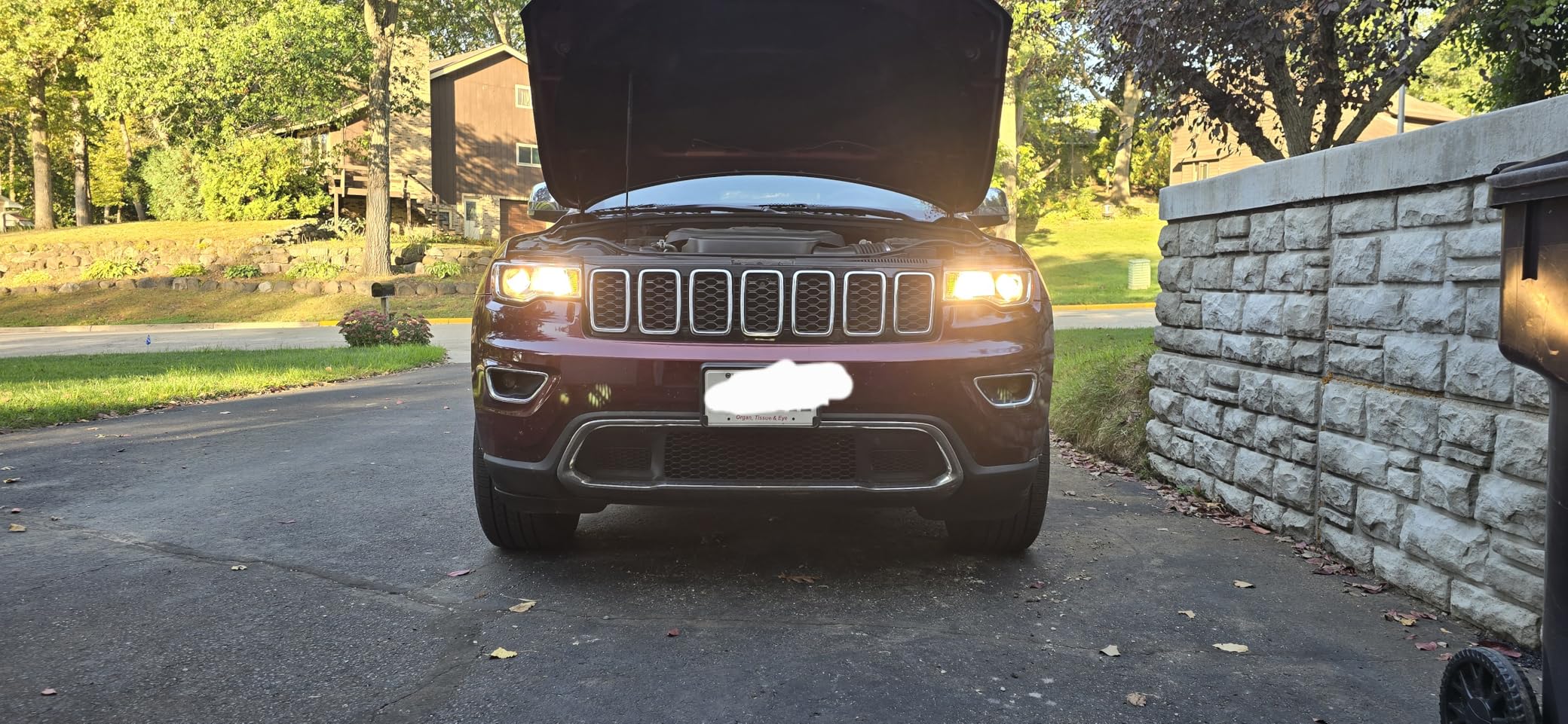Fog lights can make the difference between safe driving and dangerous visibility during harsh weather conditions. Many drivers wonder whether LED fog lights truly offer better value than traditional halogen bulbs when it comes to longevity and performance. LED fog lights typically last 25,000 to 50,000 hours compared to halogen bulbs that burn out after just 500 to 1,000 hours of use. The dramatic difference in lifespan means fewer roadside emergencies, lower replacement costs, and more reliable lighting when you need it most. Making the right choice between these two technologies depends on factors like upfront cost, long-term savings, and your specific driving needs.

Why Do Fog Lights Matter for Driving Safety?
Fog lights are positioned low on your vehicle to cut through bad weather conditions that make driving dangerous. Unlike regular headlights that bounce off fog and create blinding glare, fog lights send a wide, flat beam close to the road surface. This special design helps you see lane markings, road edges, and hazards that would be invisible in fog, rain, or snow.
The Different Types of Fog Light Bulbs
Your vehicle uses one of two main fog light technologies, and each type affects how well you can see, how often you replace bulbs, and how much you spend on maintenance.
Traditional Halogen Fog Light Bulbs
Halogen fog lights work by heating a wire filament inside a gas-filled glass bulb. Key features include:
- Warm yellow light around 3,200 Kelvin color temperature
- Low upfront cost and easy replacement availability
- High heat production during operation
- Higher power consumption from your vehicle's electrical system
- Shorter lifespan requiring frequent replacements
Modern LED Fog Light Bulbs
LED fog lights use electronic components that convert electricity directly into light without heat. Key advantages include:
- Bright white light between 5,000 to 6,000 Kelvin
- Instant full brightness when switched on
- Shock and vibration resistant solid-state construction
- Low power consumption reducing electrical system load
- Minimal heat generation during operation
- Higher upfront cost but longer service life

How Long Do Car LED Fog Lights Last
The advanced LED technology that provides superior visibility and safety benefits also delivers exceptional longevity compared to traditional lighting options. While halogen fog lights require frequent replacements that can leave drivers without proper lighting during critical weather conditions, LED fog lights offer dramatically extended service life. This extended lifespan translates directly into enhanced safety reliability and reduced maintenance costs over the vehicle's lifetime.
LED Technology Delivers Exceptional Lifespan
LED fog lights provide remarkable durability that far exceeds traditional automotive lighting solutions. The solid-state construction eliminates fragile components that typically cause premature bulb failure.
| LED Fog Light Specification | Performance Data |
| Average Lifespan | 25,000 - 50,000 hours |
| Expected Years of Use | 10 - 20 years |
| Weekly Usage Assumption | 2 - 3 hours |
| Manufacturer Warranty | 2 - 5 years |
| Failure Resistance | High (vibration, temperature, electrical surges) |
| Replacement Frequency | Once per vehicle ownership |
Quality LED fog lights from reputable manufacturers consistently deliver these performance standards, with many drivers never experiencing LED fog light failure during their vehicle ownership period.
LED vs Halogen Lifespan Comparison
The performance gap between LED and halogen fog lights becomes clear when examining their operational lifespans and replacement requirements. These differences directly impact both safety reliability and long-term costs.
- Halogen fog lights last 500 to 1,000 hours before requiring replacement, while LED fog lights operate effectively for 25,000 to 50,000 hours.
- Replacement frequency varies dramatically with halogen bulbs needing changes every 6 to 12 months, compared to LED bulbs that may never require replacement during vehicle ownership.
- Cost efficiency favors LED technology since one LED bulb set can outlast 25 to 50 halogen bulb sets over their operational lifetime.
- Safety reliability improves with LEDs because frequent halogen failures increase the risk of being without proper fog lighting during hazardous weather conditions.
- Maintenance time decreases significantly as LED fog lights eliminate the regular replacement schedule required for halogen alternatives.
Why LEDs Outlast Regular Bulbs
The impressive lifespan differences between LED and halogen fog lights come from fundamental differences in how these technologies create light. While halogen bulbs rely on heat and fragile parts that break down over time, LED fog lights use a completely different approach that eliminates most common failure points. Understanding these differences helps explain why LEDs can last decades while regular bulbs burn out in months.
The 6 Science Behind LED Longevity
LED fog lights create light through a process that avoids the main problems that destroy regular bulbs. The key differences in how each technology works directly affect how long they last.
- LEDs use electricity to create light directly without heating up a thin wire filament that can break or burn out over time.
- Halogen bulbs heat a tungsten wire to over 4,000 degrees Fahrenheit, which gradually weakens the wire until it snaps and the bulb dies.
- LED lights stay cool during operation because they convert most electrical energy into light instead of wasting it as heat.
- Halogen bulbs lose efficiency over time as the heated filament slowly evaporates and deposits material on the glass, making the light dimmer.
- LEDs maintain consistent brightness throughout their entire lifespan because no parts wear out or degrade during normal use.
- Solid-state construction in LEDs means no moving parts, fragile wires, or glass components that can break from road vibrations.
Heat Management and Durability
Heat represents the biggest enemy of automotive lighting, and LED technology handles this challenge much better than traditional bulbs. The temperature differences between these technologies create dramatic effects on durability and performance.
| Heat and Durability Factor | LED Fog Lights | Halogen Fog Lights |
| Operating Temperature | 85-120°F | 500-1,000°F |
| Heat Damage Risk | Very Low | High |
| Vibration Resistance | Excellent | Poor |
| Temperature Shock Resistance | High | Low |
| Component Degradation | Minimal | Rapid |
| Thermal Cycling Damage | Rare | Common |
LEDs produce very little heat because they convert electricity directly into light without wasting energy. Halogen bulbs create intense heat as a byproduct of their lighting process, which damages nearby components and shortens bulb life. The lower operating temperatures of LEDs also mean they can handle sudden temperature changes better, such as driving through cold rain after the lights have been on for hours.

2 Benefits Beyond Just Lifespan
Although the extended lifespan of LED fog lights has clear advantages, the better bulbs have several other advantages that make them an upgrade over halogen versions. The advances in LED technology provide advantages that affect the daily driving experience, vehicle performance, and convenience in general. These additional advantages have a tendency to make the higher upfront price worth it even before long-term savings from reduced replacements are factored in.
Brighter Light Lower Energy Use
LED fog lights deliver superior performance by utilizing less energy from your vehicle's electrical system. This combination of increased visibility and improved efficiency offers advantages that drivers experience immediately upon installation.
1. LED fog lights produce 2 to 3 times more light output than halogen bulbs of the same wattage, creating better visibility in fog, rain, and snow.
2. Energy consumption drops by 60 to 80 percent when switching from halogen to LED fog lights, reducing strain on your vehicle's alternator and battery.
3. Instant full brightness occurs immediately when you turn on LED fog lights, while halogen bulbs need several seconds to reach maximum output.
4. Color temperature runs between 5,000 to 6,000 Kelvin in LED lights, producing whiter light that helps drivers see road details and hazards more clearly.
5. Light distribution stays consistent throughout the LED's entire lifespan, while halogen bulbs gradually dim and develop dark spots as they age.
6. Lower electrical draw means better fuel economy in vehicles where the alternator works harder to power hungry halogen lighting systems.
Fewer Replacements Less Hassle
The everyday usefulness of LED fog lights extends far beyond their technical characteristics. The reduced maintenance requirements translate into real-world benefits in the form of time, money, and frustration spared over the course of several years of vehicle ownership.
1. Emergency roadside replacements become extremely rare since LED fog lights almost never fail unexpectedly during normal driving conditions.
2. No more regular bulb shopping trips are needed because LED fog lights typically last the entire time you own your vehicle.
3. Installation time decreases significantly when you only need to install fog lights once instead of replacing them multiple times per year.
4. Garage visits for bulb replacements disappear since most drivers never need professional help changing LED fog lights that rarely burn out.
5. Spare bulb storage becomes unnecessary because the reliability of LED technology eliminates the need to carry backup fog light bulbs.
6. Weather-related lighting failures drop dramatically since LEDs resist the temperature changes and moisture that commonly destroy halogen bulbs during storms.
7. Vehicle resale value may increase slightly because LED fog lights represent a desirable upgrade that appeals to potential buyers.
When to Consider Upgrading to LED Fog Lights
Certain driving situations and vehicle usage patterns make LED fog light upgrades particularly worthwhile investments that provide clear benefits over traditional halogen bulbs.
- You frequently drive in poor weather conditions such as fog, heavy rain, or snow where reliable fog lights are essential for safety.
- Your halogen fog lights burn out regularly requiring replacement more than twice per year due to frequent use or poor quality bulbs.
- You pay for professional bulb installations since labor costs for frequent halogen replacements can quickly exceed the one-time LED upgrade expense.
- You recently purchased a new vehicle and want to install long-lasting lighting that will serve throughout your ownership period.
- You operate commercial or fleet vehicles where reduced downtime and maintenance costs provide immediate operational benefits.
- You own a luxury vehicle and prefer the improved light quality and appearance that matches premium vehicle features.
- You frequently take long road trips through unfamiliar areas where reliable fog light performance becomes critical for safety.
- Your vehicle has an aging electrical system that would benefit from the reduced power draw of LED technology.
- You enjoy DIY automotive projects and can perform the installation yourself to maximize cost savings.
- Your current halogen bulbs are about to burn out making it an ideal time to upgrade rather than replace with another halogen set.
Is Upgrading Worth the Cost
Yes, upgrading to LED fog lights is worth the cost for most drivers who use their fog lights regularly, typically paying for itself within 2-3 years through reduced replacement costs and improved reliability.
The financial analysis strongly favors LED fog lights when you calculate total ownership costs over time. LED fog lights typically cost $50 to $150 per pair compared to $10 to $30 for halogen replacements, but the math changes dramatically when you factor in replacement frequency and labor costs. Since halogen fog lights last only 500 to 1,000 hours and require replacement every 6 to 12 months with regular use, drivers spend $20 to $60 annually on bulb replacements alone. Professional installation adds another $30 to $80 per replacement visit, bringing annual halogen costs to $50 to $140 per year.
LED fog lights eliminate these recurring expenses for 10 to 20 years, creating total savings of $500 to $2,800 over their lifespan. Even drivers who perform their own installations save $200 to $600 in bulb costs alone. The upgrade becomes less attractive for drivers who rarely use fog lights or plan to replace their vehicle within two years, but most drivers who use fog lights monthly or more will see positive returns on their LED investment.
Make the Switch to LED Fog Lights Today
LED fog lights beat regular halogen bulbs hands down when it comes to lasting longer, shining brighter, and saving you money over time. While halogen bulbs burn out every few months and leave you scrambling for replacements during bad weather, LEDs can last your entire time owning the car. The higher price tag upfront pays for itself pretty quickly when you stop buying replacement bulbs every year. If you drive in fog, rain, or snow regularly, or you're tired of constantly changing burned-out bulbs, upgrading to LED fog lights is one of the smartest moves you can make for your vehicle.
Frequently Asked Questions About Fog Lights
Q1: Do LED fog lights fit any car?
All but the very oldest cars can fit LED fog light upgrades, but you will need to look up your own fog light housing dimensions and electrical connections. Newer cars with highly computerized systems need special LED bulbs that will be compatible with error detection systems.
Q2: Will LED fog lights work better in snow than halogen bulbs?
LED fog lights perform better in snow because they produce less heat, hence preventing snow from clogging the lens, and their instant-on ability provides immediate visibility. The whiter light also has a better contrast to snow than the yellow halogen bulb light.
Q3: Will LED fog lights kill my car battery faster?
No, LEDs really consume 60-80% less energy than halogen bulbs, which means your battery and alternator are not as drained. This actually makes your electrical system work better.
Q4: Are there any legal limitations on the color of LED fog lights?
Most states require fog lights to be amber/yellow or white, and a few have some brightness limitations. Always reference the local vehicle codes before installing LED fog lights, as there are some areas where there is an LED brightness or color temperature limitation.
Q5: How do I know when my LED fog lights are malfunctioning?
LED fog lights rarely fail with a catastrophic burnout like halogen bulbs. They instead gradually fade over many years. LED failure is indicated by flicker, color change, or noticeably lower intensity compared to new.
Q6: Is it possible to use LED and halogen fog lights on the same vehicle?
Even though practicable, using both the halogen and LED fog lights creates inhomogeneous light patterns and changing color temperatures that can reduce visibility efficiency. It's recommended to replace both the fog lights of the same technology.
Q7: Are LED fog lights unique when it comes to maintenance?
LED fog lights have very minimal maintenance aside from infrequent cleaning of the lens. Unlike halogen bulbs, you don't need to worry about touching the bulb face or worry that oil from fingerprints will cause premature failure.
Q8: What is the difference between cheap and expensive LED fog lights?
Higher-end LED fog lights often come with better heat dissipation, more accurate light patterns, longer warranty, and better electrical components. Cheap LEDs may burn out sooner, produce warped light, or disrupt radios.
Q9: Can you use fog lights without fog?
No, it's not advisable to make use of fog lights when there's good visibility - they're actually intended for poor visibility conditions like heavy rain and fog. Overuse is detrimental to other drivers' vision and may be against traffic regulation in most places.




